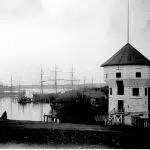Palestinians, a large Jerusalem minority, feel Trump snub
JERUSALEM — Pedestrians walk on a thick layer of soot from tires set ablaze in frequent clashes with Israeli troops. Cars navigate around potholes in streets littered with garbage. Motorists honk in a traffic jam near an Israeli checkpoint that is framed by the towering cement slabs of Israel’s separation barrier.
It’s morning rush hour in Ras Khamis, a neglected, restive Arab neighbourhood of Jerusalem where President Donald Trump’s recent recognition of the contested city as Israel’s capital has been met by cynicism, defiance and new fears that Palestinians will increasingly be marginalized.
Trump’s pivot on Jerusalem “is regrettable, saddening and unfair,” said Yasser Khatib, 42, who runs a supermarket across the street from the barrier that separates several Arab neighbourhoods of Jerusalem from the rest of the city.
Khatib said he has strong religious ties to the city and that his family’s roots go back generations. “We have no life without Jerusalem,” he said as he sold snacks to school children. “Trump can say whatever he wants.”



